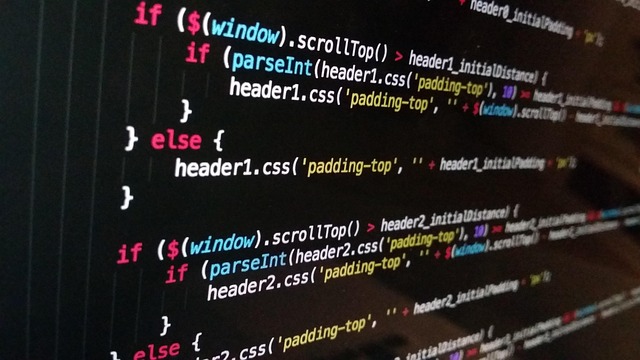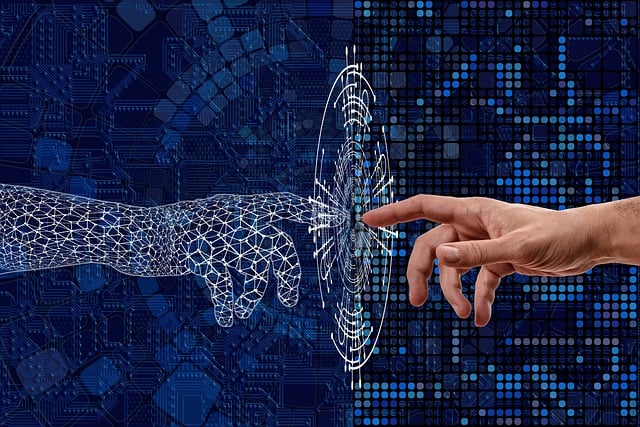Semaglutide diet programs combine medication with dietary interventions for effective weight loss, backed by remote monitoring technology. This approach offers flexible, personalized care, enabling patients to track progress and healthcare providers to adjust treatments remotely. Digital tools like wearable sensors and telemedicine platforms enhance accessibility, improve outcomes, and ensure patient safety through meticulous data security measures. Emerging AI and VR technologies further revolutionize these programs, promising tailored, accessible solutions for weight management.
Remote monitoring is transforming the way semaglutide diet programs are managed, offering innovative solutions for weight management. This article delves into the comprehensive overview of semaglutide diets, highlighting the pivotal role remote monitoring plays in enhancing patient outcomes. We explore the benefits of remote access for both patients and healthcare providers, unraveling the technologies enabling efficient tracking. Furthermore, it discusses challenges, privacy concerns, and presents case studies showcasing successful implementations. Finally, it glimpses into future trends, emphasizing the potential of remote dietary surveillance.
Understanding Semaglutide Diet Programs: A Comprehensive Overview

Semaglutide diet programs are designed to help individuals manage their weight through the use of semaglutide, a medication that mimics the effects of a natural hormone involved in regulating blood sugar and appetite. These programs offer a comprehensive approach to weight loss by combining semaglutide therapy with dietary and lifestyle interventions tailored to each individual’s needs. The primary goal is to achieve sustainable weight loss while improving overall health and well-being.
Understanding these programs involves grasping the science behind semaglutide’s action in the body, as well as the specific protocols and guidelines that define their implementation. Semaglutide diet programs typically involve close monitoring by healthcare professionals, who help patients navigate dietary adjustments, medication management, and behavioral changes necessary for optimal results. By adhering to these structured plans, individuals can experience significant benefits, including reduced body weight, improved metabolic health, and enhanced quality of life.
The Role of Remote Monitoring in Weight Management

Remote monitoring plays a pivotal role in the success of semaglutide diet programs, offering a modern approach to weight management. This method allows healthcare professionals to track patients’ progress, adherence, and well-being from a distance, providing an efficient way to support individuals on their weight loss journeys. By utilizing digital tools and technology, remote monitoring enables regular check-ins, data collection, and immediate feedback, all of which are essential for tailoring treatment plans to meet individual needs.
In the context of semaglutide diet programs, remote monitoring facilitates continuous assessment of patients’ responses to medication, helping identify any potential side effects or adjustments required in the treatment strategy. It empowers healthcare providers to offer personalized guidance and support, ensuring patients stay on track with their weight management goals. This technology is particularly beneficial for individuals who prefer a more flexible approach to medical care or those living in remote areas, ensuring they receive expert supervision without the need for frequent in-person visits.
Benefits of Remote Access for Patients and Healthcare Providers

Remote access technology offers significant advantages for both patients and healthcare providers involved in semaglutide diet programs. For patients, remote monitoring enables convenient and regular tracking of their health data, such as weight, blood pressure, and glucose levels, from the comfort of their homes. This accessibility empowers individuals to actively participate in managing their dietary program without frequent clinic visits, making it especially beneficial for those with limited mobility or busy schedules.
Additionally, healthcare providers can remotely assess patient progress, allowing for timely adjustments to treatment plans. The ability to access and analyze data from a distance facilitates more efficient care coordination, reduces administrative burdens, and enables providers to offer personalized guidance while ensuring adherence to the semaglutide diet program. This technology streamlines the patient journey, improving overall satisfaction and health outcomes.
Technologies Enabling Remote Semaglutide Monitoring

The evolution of digital technology has revolutionized remote monitoring in healthcare, and this progress is no less significant in the context of the semaglutide diet program. Wearable devices, such as smart watches and fitness trackers, are now equipped with sensors that can monitor vital signs like heart rate and blood glucose levels without requiring frequent direct measurements. These devices sync data to mobile apps, allowing users to track their health progress remotely. Additionally, telemedicine platforms enable patients to consult healthcare professionals virtually, facilitating discussions about treatment adjustments and outcomes assessment.
Remote monitoring systems for semaglutide diet programs offer several advantages. They empower individuals to take a more active role in managing their health by providing real-time data insights. This technology supports healthcare providers in offering personalized guidance at a distance, enhancing care accessibility especially for those with limited mobility or living in remote areas. Furthermore, it enables early detection of potential issues, allowing for timely interventions and improved treatment adherence.
Challenges and Considerations for Implementation

Implementing remote monitoring in semaglutide diet programs presents unique challenges. One of the primary difficulties is ensuring patient safety and adherence while allowing for distance care. Semaglutide, a medication used to manage type 2 diabetes, requires careful monitoring due to potential side effects and the need for precise dosing. Traditional in-person visits provide a level of control and direct observation that remote monitoring aims to replicate digitally. However, telemedicine platforms must account for technological barriers, patient literacy, and the ability to conduct thorough assessments remotely.
Considerations also include data security and privacy, especially when managing sensitive health information. The semaglutide diet program’s success relies on open communication between healthcare providers and patients. Remote monitoring should enhance this relationship rather than create distance. Effective strategies involve training both parties in using technology, establishing clear protocols for data sharing, and maintaining regular contact to address concerns promptly. Additionally, healthcare providers must remain vigilant in identifying red flags that might indicate medication non-adherence or adverse reactions, requiring flexible yet thorough approaches tailored to each patient’s needs.
Patient Privacy and Security in Remote Monitoring Systems

Patient privacy and security are paramount considerations in remote monitoring systems for semaglutide diet programs. These innovative technologies, designed to track patient progress from a distance, must adhere to strict data protection standards to safeguard sensitive medical information. With remote access to vital signs, dietary intake, and treatment adherence, it becomes crucial to ensure that all communications and data storage are encrypted and compliant with regulations like HIPAA (Health Insurance Portability and Accountability Act) in the US or GDPR (General Data Protection Regulation) globally.
Implementing robust security measures, such as multi-factor authentication and secure network protocols, is essential to prevent unauthorized access. Additionally, clear consent mechanisms should be in place, informing patients about data collection practices and their rights regarding privacy. Transparency builds trust and ensures that individuals participating in semaglutide diet programs feel secure, knowing their personal health information is protected within the digital ecosystem.
Case Studies: Successful Remote Semaglutide Programs

Remote monitoring has proven to be a game-changer in many healthcare scenarios, and semaglutide diet programs are no exception. Case studies from various clinics and practices have shown remarkable success in managing patients with type 2 diabetes using remote monitoring tools for this innovative treatment. For instance, a study conducted in the US demonstrated that remote monitoring of semaglutide injections led to significant improvements in glycemic control, with patients experiencing reduced HbA1c levels over time. This approach also facilitated easier access to care, allowing healthcare providers to offer personalized guidance and support from a distance.
Another successful implementation was reported by a European medical center, where remote monitoring was integrated into a semaglutide diet program for obese patients. The study revealed improved patient adherence to the treatment plan due to the convenience of at-home monitoring. As a result, participants achieved substantial weight loss and saw improvements in metabolic health markers, highlighting the potential of this approach to drive positive outcomes in chronic disease management.
Future Trends and Innovations in Remote Dietary Surveillance

The future of remote dietary surveillance in semaglutide diet programs looks promising with emerging technologies poised to enhance monitoring capabilities. Artificial intelligence (AI) and machine learning algorithms can analyze vast amounts of data from wearable devices, food logging apps, and even smart kitchen appliances to provide personalized nutrition recommendations tailored to each patient’s needs. This level of customization ensures that individuals following a semaglutide diet receive optimal support, promoting adherence and better health outcomes.
Additionally, virtual reality (VR) and augmented reality (AR) technologies could play a significant role in remote monitoring. Immersive experiences can offer educational insights into portion control, healthy eating habits, and the impact of food choices, making dietary interventions more engaging and effective. With innovations like these, the semaglutide diet program’s reach and accessibility are set to expand, revolutionizing how healthcare professionals support patients’ weight management journeys.
